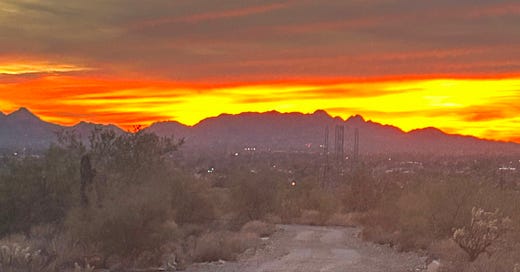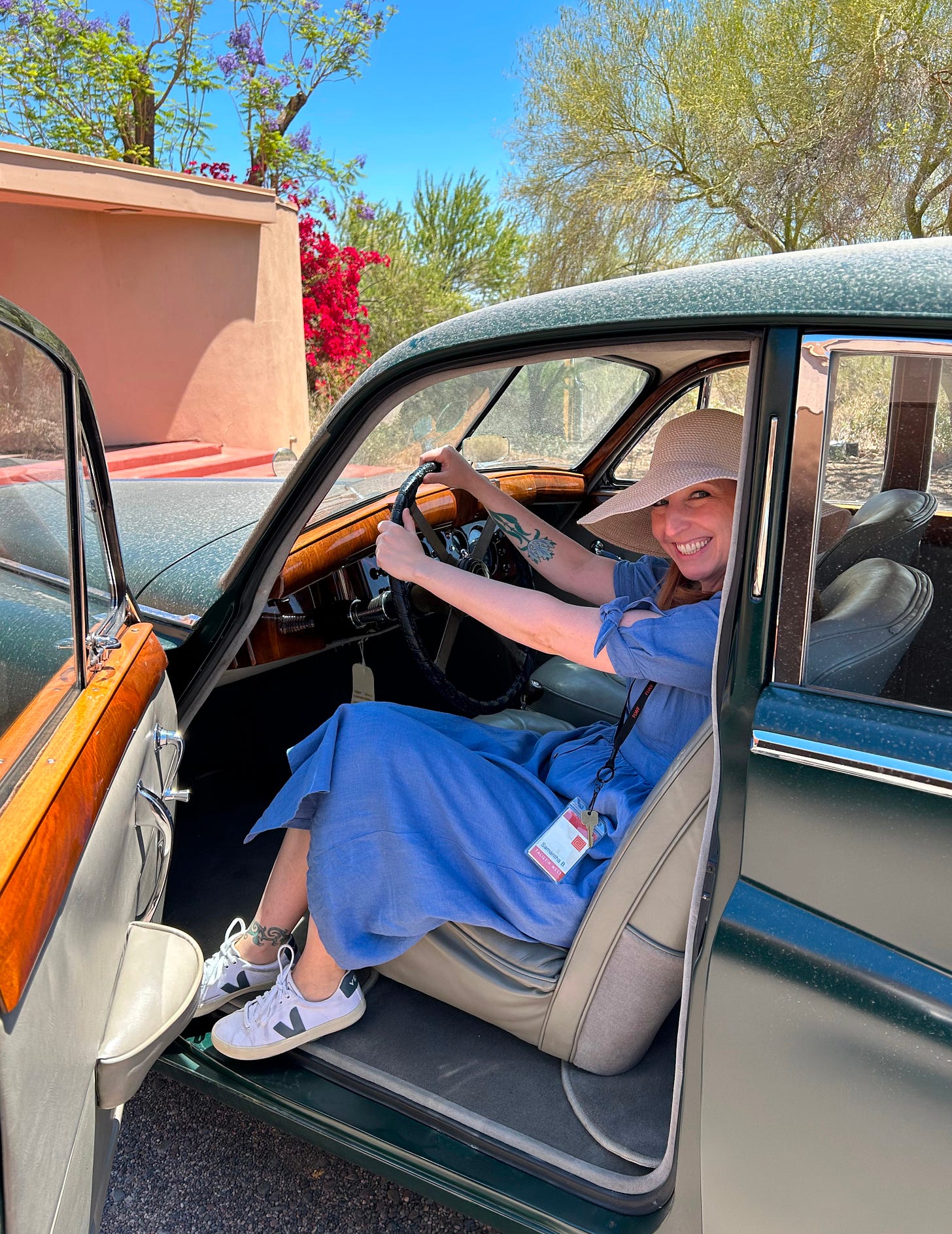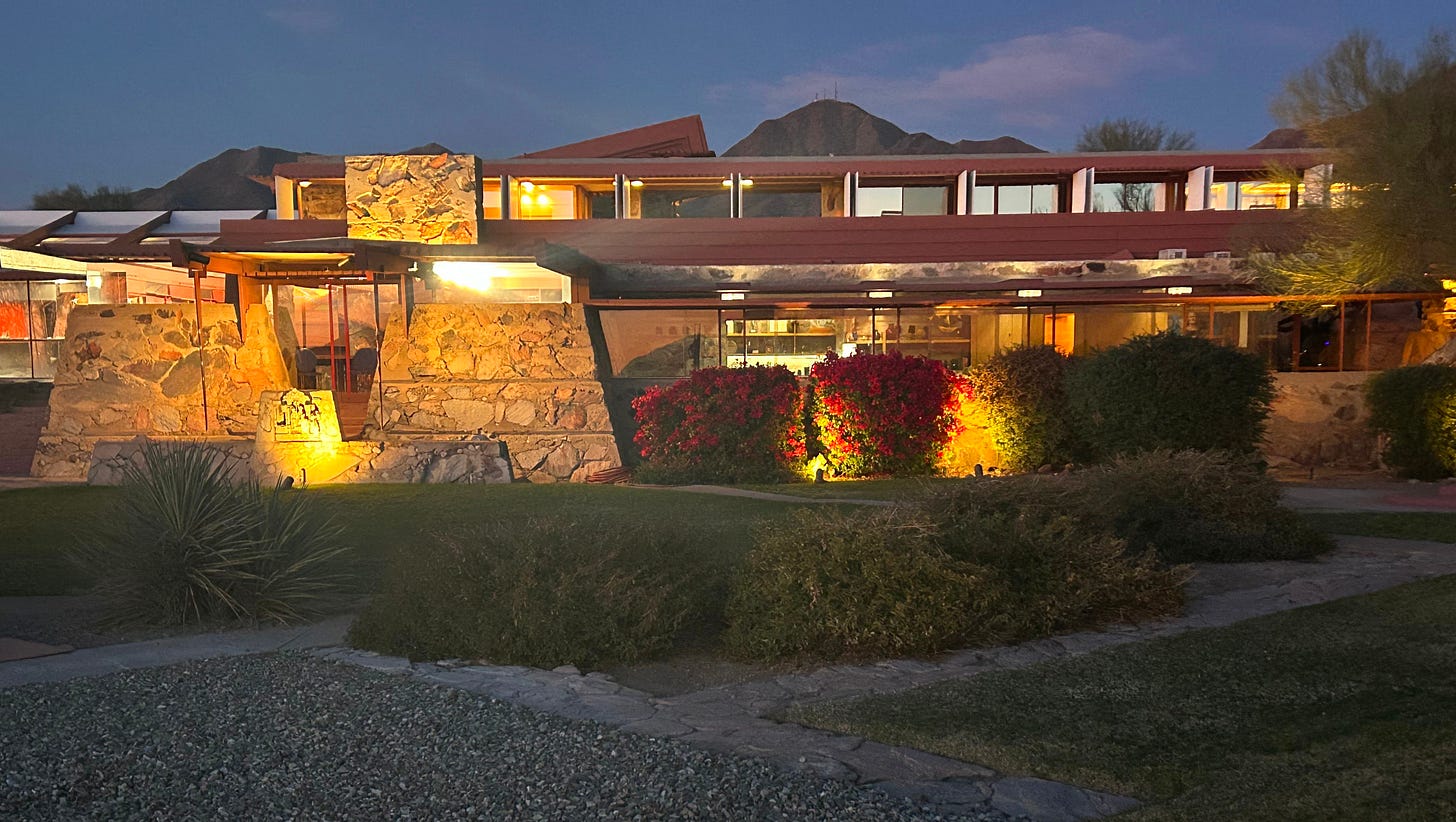Once, when my friend from the U.S. was visiting me in the U.K., we took the train from London Waterloo to dear old Exeter—a route we later referred to as the “milk run”—for it stopped, unlike the faster route between Paddington and Exeter, at what feels like every town, village, and hamlet in Dorset, Wiltshire, and Somerset. Of course, it doesn’t, but when you are tired from a long day in London, such journeys feel endless. But it didn’t matter too much—we were together and we actually had seats!1 Besides, the train stops at Salisbury, where you can catch a glimpse, as the train pulls into the station, of its majestic and rather solemn-looking cathedral spire. Of all the medieval buildings in Britain, Salisbury Cathedral is my favorite.
It was late at night, and my friend was dozing, but as the train approached Salisbury, I gave him a gentle shake on the shoulder. I did not want him to miss the view of the spire.
“Oh, I’ve been to Salisbury Cathedral, I’m good,” he said, much to my horror as he closed his eyes in an attempt to drift back to sleep. But I was having none of it.
“Oh,” I replied, raising my voice in the “quiet car.” “So, if you were driving past the Grand Canyon, would you just not look out of the window because you’ve been there before? Would you close your eyes or look the other way if you happened upon Tintern Abbey BECAUSE YOU HAD BEEN THERE BEFORE?”
“Of course not!”
“It’s not as though you have much opportunity to see these things, but that’s your choice. I’m sorry I woke you. Sweet dreams!”
My friend, mocking me, sat up straight, turned his entire torso to the window and stared out, waiting for the brief view of the spire to appear while I looked at him looking at the Cathedral to make sure he was appreciating it. Once we passed it, he returned to his slumber.
I was annoyed.2 Because this is serious business, the business of taking it all in—“it” being the life around us, the places and encounters and views that give it meaning. Hundreds upon hundreds of years reflected in medieval masonry, lit from within and standing out from the darkness, glimpsed through a manky window. “There it is,” one thinks, “still standing, having withstood (not without help) the weight of its own past and having witnessed, in the way that only the things that outlast us can, more than most of us witness in one lifetime, though it remains in place.” I can never help but think of the people who not only constructed that tall, elegant spire, but all those souls who took it in, treasured it, lived in its shadow, ignored it because they were getting on with their day...
All of these thoughts intermingled with my memories of the place: the 18-year-old girl who traveled there with her mom on a cultural pilgrimage of sorts, the 27-year-old who had finally “made it,” attempting to appreciate it from the train. Hundreds of years against which one can measure the passage of time.
I thought about this during the pandemic when Salisbury Cathedral opened its doors to administer thousands of vaccinations a day, all while the director of music played a variety of songs on its 1876 organ.3 There it was, medieval construction in all its gothic glory on television: still ancient, still functioning, still part of human history, and still making me emotional.
Of course, all of this stems from a lifelong habit of attempting to appreciate the hell out of most things because, ever since I can remember, I have known that such “beauteous forms,” could only remain in the heart if they were treasured dearly at the time. And so I have lived by Granma Mary Rommely’s advice in A Tree Grows in Brooklyn, “To look at everything always as though you were seeing it either for the first or last time: Thus is your time on earth filled with glory.”4
Goodness, how exhausting. What a chore! Because this can break your heart.
You can’t possibly look at everything as though seeing it for the first or last time. In many instances, you wouldn’t want to. But that is hardly the point. It is about having a sense of awe, perhaps, and having the wisdom to hold such moments dear.
But it is often about saying goodbye.
There were a few times I had to remind myself to look at Exeter Cathedral or the bucolic hills surrounding the city as I scurried home in torrential wind and rain, trying to balance umbrella and shopping bags. Having made so many sacrifices to live a life amidst such things, there was pressure not to take it for granted, because I knew I wouldn’t always be there and I knew that I would miss it one day. Such is the pressure of the weight of the past, as Thomas Hardy would say.
Or is it the weight of the present? Perhaps it isn’t just the consciousness of all those lives that came before but the emotional weight of appreciating the present, holding it dear and storing it for a later time. In any event, this is how I felt recently upon leaving—of all places—Taliesin West; a collection of buildings designed by Frank Lloyd Wright and situated in the middle of the McDowell Mountains overlooking Phoenix, Arizona.
To say that I would not have looked out of the car window to catch a glimpse of Taliesin West when passing by before I started working there is hardly an understatement. I have never been a fan of Frank Lloyd Wright’s work, partly because we often take the things in our backyard for granted, but also because I thought his designs were ugly and, at least in Arizona, celebrated the desert landscape I abhorred to an extent I thought was extreme. In my aesthetic worldview, Wright “was wrong, Wren was right.”5
And so, as I have said previously, it was certainly one of life’s little ironies that I ended up working there. All the more surprising, perhaps, was the fact that I enjoyed it. On my last day a few weeks ago, I took it all in as though seeing it for the first and last time.
Mr. Wright, as everyone respectfully calls him, moved to the middle of the desert in the 1930s and started construction on a series of buildings—a drafting studio, theatre, dining hall, and living quarters—for his fellowship. These were the buildings I learned to access and navigate with the help of a patient manager in order to assist with events during the busy season. These spaces drove me crazy at times: they are wonky, uneven, dark, labyrinthine in nature. There was a door with a lock on only one side, at the bottom. Another set of rooms required locking three doors and going out the back way because the front door only locked from within. “Damn you, Frank,” I would say, juggling keys in the dark.
Once, when I was there alone, and the lights in the theatre started flickering incessantly and didn’t stop, it all felt a bit uncanny and I whispered, “Sorry, Mr. Wright.” I was not afraid of ghosts, though some say the place is haunted. I was afraid of the uneven, unexpected steps (once tripping on one and thinking that if I fell and cracked my head open, I would not be found until the following day). And I was afraid of certain animals. Another time, while walking to my car late at night, I heard what I can only describe as the Hound of the Baskervilles killing its prey. I was so terrified that I got in on the passenger side of my car (that being nearest) and crawled over to the driver’s seat once inside. I have been told this was either a mountain lion, javelina, or bobcat. I am convinced it was a possessed mountain lion killing a javelina.
After this, my dear friend bought me anti-mountain lion spray (I have no idea how this works and I would not have wanted to kill a mountain lion; it was simply comforting knowing it was there) and a quality flashlight. I never had to use the former.
And then, the snakes. One gentleman told me they could show up anywhere. They once even found one in a cupboard, meaning I ever after opened said cupboard with the handle of a large, old-fashioned umbrella. It was inevitable that I would encounter a snake, he said.
I never did.
What I found instead was a group of lovely individuals who keep this unusual place running, and there are many who will do so even during the most brutal summer months.
Being a part of the busy season, I learned about spreadsheets and various databases, but I also learned that I have the muscle required to lift and move lots of heavy objects, oftentimes through small corridors, rain or shine.
It was good to move, to be in the sun, to chat with all kinds of people. And so I learned to appreciate Wright’s designs, not because I was looking at them as though for the first or last time, but because I was looking at his buildings through the eyes of the people who cared so much about them: volunteers, visitors, colleagues. They made me appreciate the place more. “I am more of a London Georgian Townhouse kind of gal,” I told an enthusiastic photographer when he asked me what I thought of a circular, 1970s structure (based on Mr. Wright’s design) with avocado interiors, “but I can appreciate it for what it is.” And I appreciated it even more because others were so thrilled by it.
I am grateful to Mr. Wright, though, because he made me see the beauty in the desert. Somehow, his buildings and their arrangements have a way of forcing you to look at the surrounding landscape through a new lens. I learned not to simply appreciate the sunset for its own sake, but for the shadows it cast on the buildings and surrounding mountains. Simply turning a corner meant the surprise of a different perspective of the valley and its urban sprawl beneath. And the interior spaces to which one had grown accustomed could suddenly look different according to the time of day: sunrise and sunset made Wright’s rich, though uniform color palette kaleidoscopic.
And I loved how in the evenings the place would burst into life: birds, deer in the orchard, little rabbits. The quail were a particular delight, always scurrying over paths one at a time, and, just when you think you have seen them all, a few more will follow in succession. I saw roadrunners, a cactus wren. All these things I had once learned about in school and had long forgotten. I saw a pair of coyotes as I drove up the hill one evening. I stopped my car to watch them, and they stared back, not moving a muscle, blurred perfectly with their surroundings. And you could hear them howling at night as you looked up at the stars.
The place was at its most beautiful in the rain or just before a storm, a rare occasion to be sure. I have always loved the desert after a rain, but at Taliesin West, the smell of mesquite in the damp air was uncorrupted…delicious.
I realized Taliesin West had a hold on me when I returned from a brief trip to Los Angeles and was wondering if I could see it from the plane. I couldn’t. Wright’s desert masonry blends in too well with the surroundings, I think.
As usual, it’s people who make a place special. There have been moments this past year when I regretted leaving my previous job, partly because of financial insecurity, but also because I missed the students. But I think the stress of it all was worth the experience, the experience of learning to love something unexpected.
Mr. Wright loved movies, and he began construction in 1949 of a theatre where he and the members of the fellowship could watch the latest films. It was a privilege to work the current Taliesin West Film Series, where the public can watch a classic Hollywood film in what is now called the Cabaret Theatre.
It was such a wholesome experience: the guests wanted to be there. Ah, how I cherished the moment the audience would applaud each time a film ended. When so much of the world is in chaos, it’s reassuring to know that people still appreciate art. And so it was fitting that this was the event I worked on my last night at Taliesin West. I took my time locking up and turning out the lights, and looked around the cavernous projector room with its rusted tin boxes that have remained untouched for decades. I then did one last loop of the premises, taking it all in for the last time, though I will visit again soon.
Walking up some steps while gazing at the stars, I saw something out of the corner of my eye that looked like a scorpion. I decided this was my signal; it was time to leave.
One evening, during a storm, a guest asked if she could take shelter inside the theatre while she waited for her Uber. Of course I said yes and waited with her. She told me she had visited the place numerous times, that it meant a great deal to her. But she was leaving Arizona, returning, I believe, to France. She was there to say goodbye. I sat in the back reading my book while she remained in her seat near the front, reverently taking it all in. After a while, I looked up and she was gone.
It is difficult to leave the places that have meant so much to us, even if we plan on visiting again. During these long summer days, I have been desperately homesick for my other home and coped with this by re-reading all of my favorite books about the Battle of Britain. I may have left the UK, but it certainly hasn’t left me. And maybe that’s enough, at least for now.
I should note here that train travel is not always thrilling. The Cross Country train between Birmingham and Stansted Airport, for example, is notoriously bad and will require its own essay.
I also acknowledge that, from his perspective, I was slightly annoying.
https://www.npr.org/2021/01/30/962358052/salisbury-cathedral-organ-plays-majestic-music-during-vaccinations
Betty Smith, A Tree Grows in Brooklyn, p. 355.
In Thomas Hardy’s Jude the Obscure, Sue claims that “Pugin was wrong, Wren was right.” See Pat
5, Chapter 6.







